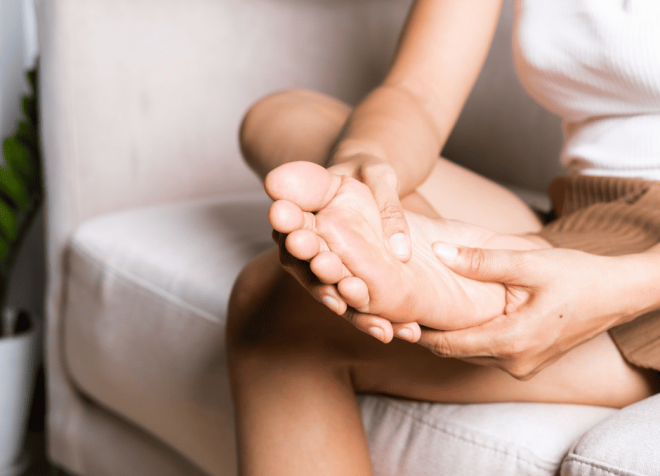Understanding a Morton's Neuroma
This condition develops in the plantar digital nerves between the bones of your foot which may sound bizarre to those who don’t suffer with the condition but rings true for those suffering.
As the nerves experience day to day movement, compression from the foots tissue, they react through inflammation, thickening which results in a Mortons Neuroma. The lining of the nerves can become thickened and are usually found at the ball of your foot. .

How does a Mortons Neuroma form?
How one develops can be affected by several reasons:
What are the symptoms?
Typically the Morton’s neuroma can develop between the 3rd and 4th toes but can also affect between other joints in the foot. A classic indicator there may be a Morton’s neuroma is the pain located under the ball of the foot.
Other symptoms may include:
How do we diagnose a Morton's Neuroma?
Your podiatrist will assess how you experience a squeeze on the ball of your foot. If the pain increases during this particular test, then this will be looked into with further assessment. As there are many symptoms similar to other foot conditions, our Amersham podiatry team will continue with further Neuroma tests.
Treatment Options:
We recommend being seen as soon as possible by our team to ensure we can help you. A tailored treatment plan will be created for you following an assessment. Typically this involves supporting your feet as best possible with recommended footwear, strengthening exercises with rehabilitation, strapping the foot. In summary we encourage rest, ice, compression and elevation (RICE).
Following your assessment, if the pain is persistent then other options could be considered such as corticosteroid injections, surgical removal or simply anti -inflammatory medications.
Preventing a Morton's neuroma
Your podiatrist will recommend supportive shoes with space and padding, particularly for those who are active. Avoiding shoes with high heels is key when looking to prevent the condition.
What if you don’t receive treatment?
By not seeking professional advice and treatment, this can lead to further issues which can result in extreme treatment such as surgery. Ignoring a Morton’s Neuroma can also lead to further foot conditions such as bursitis. Footwear is key to insure there is not further damage or repeats of the condition.
At Walk This Way Poditry Podiatry Clinic, we’re dedicated to addressing your foot concerns with precision and care. Don’t let Morton’s neuroma slow you down—schedule a consultation with our expert Amersham podiatrists today.
Your journey to happier, healthier feet begins here.
Book An Appointment or Contact Us today









